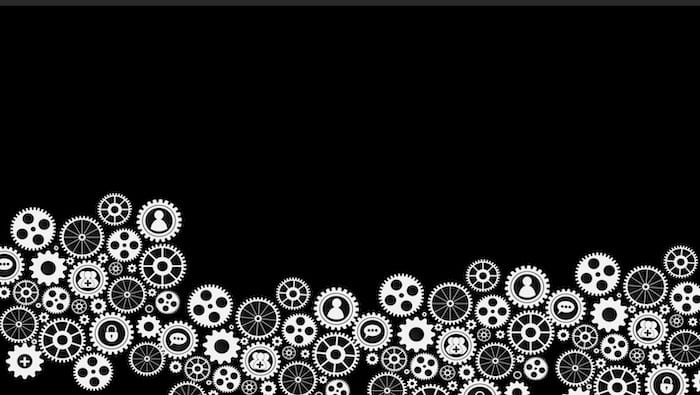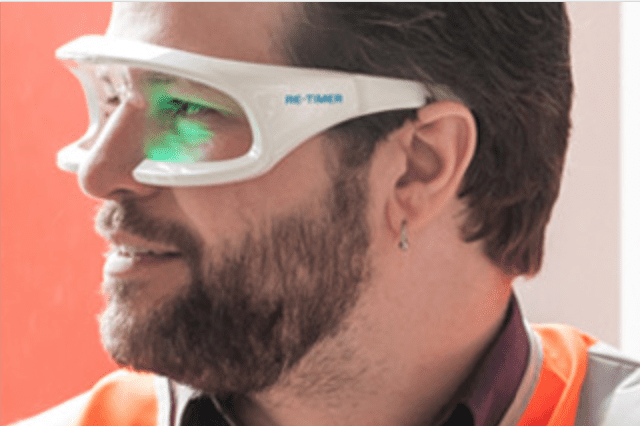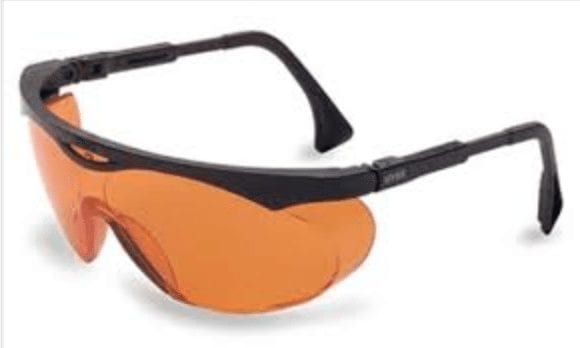Let There be Light
I have been an emergency registrar approximately forever. Some people’s training years form a crisp, well defined, early-adult life phase. Mine are evolving into a meandering opus.
In early 2013, awake with a newborn in the wee hours of the morning, (a highly recommended setting for major life decision making) I concocted an audacious plan to Finish My Training. Rotations, exam sittings and an interstate move all slotted in with tetris-like precision, it was brilliant in theory but too fragile for in vivo conditions. Such was the interdependency of the various elements that an unexpected delay in the completion of one component wreaked havoc upon my carefully crafted path to fellowship, in the manner of my toddler son in a newly tidied room.
Left slightly flailing, I faced the reality of further years in my prolonged medical adolescence without a clear end point upon which to anchor. If I wished to continue with emergency training, (and considering I’ve caught myself lying in bed reminiscing about putting a chest tube, I probably did) it was time to stop dreaming of the lush pastures on the other side of Mt FACEM, and focus on making life work just a little bit better in the here and now.
There are numerous challenges associated with trainee life; exams, forced relocations and explaining to well meaning relatives exactly why you are still studying to name a few. I will assume, however, I am with the majority when I cite the decidedly unsexy roster as the main culprit in my struggle to maintain a reasonable sense of wellbeing. It goes without saying that night shift is a hugely disruptive work pattern, but a large proportion of late finishes and the constantly rotating shifts also contribute to the difficulty in maintaining a good sleep habit. The relationship between myself and restful slumber further strained by two small people and the resulting zero-sum game of inter-spousal sleep politics, it was clear that if I could better manage my sleep around shift work, I might just rule the world.
Working out the next step in this challenge (better sleep that is, not world domination) was a little trickier. As this subject falls somewhere on the spectrum between passion and obsession for me, there was no low hanging fruit left to tackle. Morning exercise and light exposure as natural as breathing. Blackout blinds installed. No caffeine at least eight hours before planned bedtime. No screen time the hour before bedtime (unless there’s something really, really important on the internet). A nice, wind down bedtime routine. Noise cancelling headphones for sleeping. A valiant, decade long attempt to cultivate the habit of daily meditation.
This was clearly a situation best addressed by some internet shopping and a little N=1 trial. Wallet loosened by the same post night shift disinhibition that is a mixed blessing on morning handover rounds, I jumped online and made two purchases; a relatively cheap pair of blue-light blocking shades, and a long coveted item, re-timer sleep glasses.
Background
It was the light which had attracted my attention on this occasion. The role of sunlight exposure as the master puppeteer of our circadian rhythm, via the pulsed release of melatonin from the pineal gland, to be precise. Rising melatonin levels increase sleep propensity. In a “typical” sleep pattern of falling asleep at 11pm and rising at 7am (I think I did this once around 2009) melatonin release will begin around 9pm and peak approximately seven hours later, at 4am, the witching hour of the night shift worker. By 9am, our melatonin levels have fallen significantly, release further inhibited by early morning light exposure, and levels are negligible throughout the daylight hours. This makes it increasingly difficult to fall into restful sleep, our artificial sleep pattern misaligned with our internal clock.
The whole process gets even more interesting when you consider that under normal circumstances, preparation for the next night sleep actually begins upon morning waking. The reason why every article ever written on sleep quality opens with “Go to bed and get up at the same time every day” is not purely to provoke irrational stabby rage towards the authors within shift workers everywhere, but because early morning light exposure plays a crucial role in sleep physiology by pre-setting the timing for evening melatonin release.
To summarise the relationship in 2 simple tenets:
- Light exposure early in the main waking period brings forward the sleep cycle
- Light exposure late in the main waking period delays the sleep cycle.
While there was enough basic science evidence to satisfy my inner skeptic, whether artificial manipulation of this process would be practical or beneficial was not so clear.
Blue light blocking shades
- Financial Outlay: A large variety available online from $10 upwards.
- Rationale: The amber lenses completely block the blue light wavelength to which the photoreceptors affecting melatonin release are most sensitive. This creates what one paper referred to poetically as a “physiological darkness”. Worn post night shift, the natural early morning inhibition of melatonin release is halted, making it easier to fall asleep in daylight hours. They can also be worn in the evening to shield artificial lights.
- Evidence: Good. Multiple randomised control trials, at least one blinded and placebo controlled, reporting a significant benefit in sleep quality.
- Use: As soon as handover finished at 8.30am I put them on to finish my notes and referrals (in the privacy of the reg office), and wore them for the drive home. They blocked glare effectively, and the tinted lenses made me feel just a little more Bono and a little less thirty something whose hobbies include wiping bench tops and folding washing. I also trialled wearing them at the tail end of a midnight finish and in the evening at home two hours before bedtime.
Re-timer sleep glasses
- Financial outlay: Enough to result in a three year courtship prior to purchase.
- Rationale: Developed by sleep psychologists at Flinders University, they are promoted for use for jet lag, seasonal affective disorder, shift work and sleep phase disorders. A light of the correct wavelength for maximal stimulation of the relevant photoreceptors is beamed directly onto the retina. The idea for shift workers is to promote a partial “circadian phase delay”, by delaying the usual melatonin peak by up to four hours. This shifts the highest fatigue period out of work hours, with a primary aim of improved workplace alertness rather than daytime sleep quality.
- Evidence: While the science and background research appear sound, minimal clinical evidence related to this particular device was available.
- Use: I emailed the support team to be given a personalised schedule, and was instructed to wear them for half an hour between 2 and 3am. I also went “off label” and tried wearing them directly upon waking at 2pm following the final nightshift with the intention of bringing the sleep phase forward. (Direct sunlight exposure is my default option here, but isn’t always practical.)
- Surprisingly wearable, they fit easily and comfortably over glasses. I was able to eat and drink, move around and work on the computer without limitation. I eased into use by trialling them round the house, much to the delight of my children. I then bravely debuted them on the shop floor at 2am, much to the delight of the seventeen nurses who suddenly fell within my visual field, despite there NEVER being anyone there when I’m sterile, need to put in one last suture and run out of ethylon.
- Re-timers aren’t really suitable for direct patient contact or face to face referrals, but I quarantined a section of time for note writing, phone referrals and a snack and was able to wear them for a relatively continuous half hour, even on one particularly busy night. If a patient required urgent attention I simply took them off and replaced them upon returning to the staff base. This planned desk time probably increased my overall shift productivity and certainly highlighted the non-urgent nature of the majority of our interruptions.
The Verdict
True benefit or an expensive case of self-justification bias leading to placebo effect? Not sure, but over a couple of trial weeks which included the full complement of shift hours, I fell into sleep easily, felt refreshed on waking, and in the night shift recovery phase noticed a distinct lack of the lethargy and anhedonia I have come to expect from this period. Re-timer use also appeared to lead to a significant curtailing of the 4-5am night shift slump. Given the tendency of human behaviour to regress to the mean, it’s too early to say whether the practical challenges of regular use in a hectic environment (not to mention relentless mirth from colleagues) will inhibit development of the habitual use required for meaningful, long-term outcomes.
It’s worth noting, however, that any effects occurred in an environment of careful attention to my sleep pattern. So while there may well be a role for such tools in the arsenal of the “lifestyle” shift worker, there is unlikely to be any benefit without continued effort in maintaining the fundamentals I glossed over earlier. A cool, dark, quiet environment for sleep. Regulation of caffeine intake. Going to bed early when possible. A full time, live-in night nanny. Fresh air, exercise and reasonable nutrition. The boring truth is that when practiced consistently, these things work.The moral of the story? Sleep is a little bit like sepsis. Both start with S. Importance of proper management was underestimated for many years. Trying harder is good. There probably is no magic bullet, (I’m talking to you, Xigris) but meticulous attention to doing the basics well is likely to result in better outcomes. Get it right and you might just save a life. Or even rule the world.
Disclosures
The author paid for both products herself and has no affiliation with either company. She fully intends to disclose the true price of re-timer glasses to her husband, but is just waiting for the right moment.
References
- Managing the health and safety of Shift workers, MJA Vol 199 Supplement: Sleep Disorders, a practical guide for Australian health care practitioners. [PDF]
- Re-timer website

SMILE
squared
Emergency physician and keen follower of #FOAMed | @KristinJBoyle | LinkedIn


